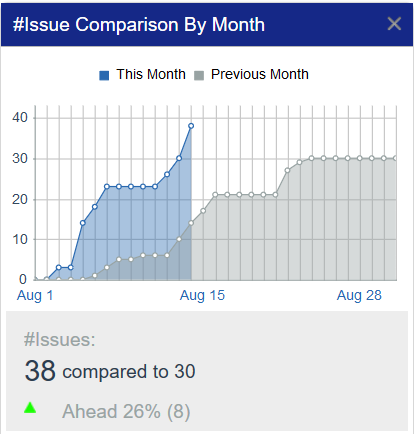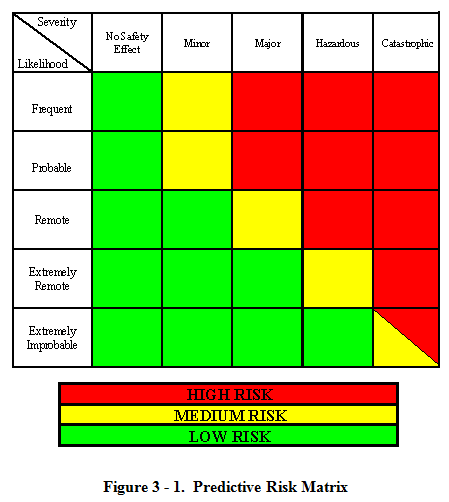Reactive and Proactive Hazard Identification and Risk Assessment

Aviation safety managers are tasked to ensure that the safety risks encountered at their operations are controlled to as low as reasonably practicable (ALARP).
Modern aviation safety risk management includes:
- Hazard identification;
- Hazard reporting;
- Safety risk assessment; and
- Implementing appropriate control and recovery measures.
Related Hazard Identification Articles
- From Reactive to Proactive Hazard Identification in Aviation SMS
- 4 Tips to Approach Hazard Identification in Aviation SMS
- How to Be Compliant With ICAO Hazard Identification
Aviation hazard identification and risk assessment are performed both reactively and proactively. New companies will naturally conduct multiple proactive hazard analysis exercises before commencing operations to ensure risks are adequately accounted for and controlled. Afterward, new hazards will be identified as operations are conducted in the aviation safety management systems (SMS) safety assurance activities.
Many safety managers have a problem determining what is a hazard and what is a risk. So let's tackle this before we get too involved in describing how to identify hazards and assess risks in an aviation SMS.
Hazard Definition Relating to Aviation SMS

Hazards are anything that can potentially harm any of the following elements:
- People (customers, employees, contractors);
- The environment;
- Assets (aircraft, equipment, buildings); or
- Company reputation.
For airlines and airports, hazards are not always physical, tangible elements. For example, an intangible hazard could be:
- Political instability;
- Regulatory changes; or
- Regional competition.
Tangible hazards are something we all can manage more easily because we can see it. These hazards may be:
- Untrained personnel;
- Mountainous terrain;
- Cold weather;
- Chemicals around the workplace; or
- Infectious diseases.
Safety managers must be intimately familiar with discussing hazards to managers and employees to maintain credibility and promote the SMS. Employees and managers will then be better prepared to identify and report hazards using the SMS' safety reporting system.
Related Articles on Hazard Reporting
- Best Practices for Hazard Reporting in Aviation SMS - With Examples
- How to Maintain Monthly Aviation SMS Hazard Reporting Goals
- What Good Hazard Reporting Process Look Like in Mature Aviation SMS
Risk Definition Relating to Aviation SMS
The risk is the potential impact or damage that a hazard may cause to affected elements. The risk is evaluated in both a controlled and uncontrolled state. The risk is controlled using various mitigation strategies. These risk control measures are commonly known as control measures or risk controls in an aviation SMS.
Control measures may include:
- Preventive actions that are designed to prevent an event from happening;
- Detective measures that focus on quickly identifying when a hazard manifests itself; and
- Corrective measures to fix or restore the company to normal operations after an event.
When managing hazards, safety professionals seek to reduce risk to ALARP. The risk may still be present after treatment; however, future uncertainty becomes more manageable should an event occur.
What Is Hazard Identification
Now that we know the difference between hazards and risks, let's get to the meat of this discussion about hazard identification. Hazard identification is the process used to identify hazards. Simple, right?
We know what hazards are. Before aviation service providers commence operations, they have policies and procedures to control risk. However, hazards will always manifest themselves through:
- Accidents;
- Incidents; and
- Other irregularities.
Safety hazards commonly manifest themselves whenever any changes affect the aviation service provider's operations, including normal work activities.
These changes may include, and are certainly not limited to:
- Changes in work procedures or the working environment;
- Purchase or lease additional aircraft;
- Decommissioning existing aircraft;
- Adding new buildings, runways or equipment;
- Purchasing or switching new products (parts or chemicals);
- Implementing cost reduction strategies;
- Incorporating new labor-saving technologies;
- Workplace changes due to accidents, incidents, or identified irregularities; or
- New employee union demands.
Related Articles on Hazard Reporting
- 10 Most Important Hazard Reporting Forms Aviation SMS
- What Is Missing Most in Aviation Hazard Reporting Systems?
- How Safety Managers Hurt Their Aviation Hazard Reporting Processes
How Are Hazards Identified?

Aviation safety hazards generally manifest themselves from the interactions of:
- Physical work environment;
- Equipment, aircraft, work materials and substances; and
- Work activity and customer activity.
Hazards are also routinely identified whenever new information enters the aviation SMS. This information may take the form of:
- Reported hazards;
- Reported accidents and incidents;
- Formal and informal interviews with workers and customers;
- Complaints from both customers and workers;
- Investigations arising from reported events;
- Workplace inspections;
- Internal and external audit findings and concerns;
- Employee safety surveys;
- Civil aviation authorities' reports;
- Aircraft manufacturers reports; and
- Aviation industry trends provided by non-governmental agencies.
How to Assess Risks From Identified Hazards

Once hazards are identified and formally entered into an aviation risk management system, they are reviewed and risk assessed. Risk management systems may be as simple as Excel spreadsheets, Word templates, or more advanced aviation safety management databases.
Most mid-sized and larger operators today have aviation SMS database programs to facilitate:
- Data storage and retrieval;
- Report generation; and
- Hazard trend analysis.
Aviation safety reporting databases are not required in most parts of the world; however, since 2015, aviation service providers have been required to have databases to store and manage reported hazards.
Once the safety team understands the nature of the reported safety concern, they proceed to perform a risk assessment.
Formal risk assessments in aviation SMS always involve considering:
- What could happen should the hazard manifest itself (again, if it already occurred); and
- The likelihood of this actually happening (again, if it already occurred).
Hazard risk assessments help safety professionals determine:
- How severe the risk is;
- Whether existing controls remain effective;
- Whether additional actions should be taken to control the future risk; and
- How quickly do the corrective/preventive actions need to be implemented?
Related Risk Assessment Articles
- What Is Risk Assessment in Aviation SMS
- 5 Questions to Ask before Making Risk Assessment
- Difference Between Hazard Risk Assessment and Hazard Risk Analysis
When safety managers are determining the likelihood of occurrence or recurrence, there are a few questions that should be answered. These questions may be part of your formal risk management policies and procedures, or they may be simple mental notes. Of course, we prefer that all risk management policies and procedures are adequately documented, but not so thoroughly that they will get you into trouble with auditors.

Safety professionals that neglect to follow documented policies and procedures risk audit findings whenever regulatory auditors visit. Therefore, we recommend that processes are not overly detailed and that risk assessment processes are documented in sufficient detail so that they will adequately address every possible scenario, from low-risk routine issues to an event where there may be multiple fatalities.
Now let's get back to determining the likelihood of occurrence/recurrence in our risk assessment.
We have these simple questions to ask:
- How often are workers or equipment exposed to this hazard?
- Does increased exposure increase the chance of occurrence?
- Has this ever happened before? At your company, another company? In the industry?
Risk increases as the likelihood and severity increase.
Evaluating Consequences Resulting From Hazard Manifestation
After performing an initial risk assessment, safety managers should next evaluate the potential damage should this event either actually occur, or recur. Several questions should be considered:
- What type of harm will reasonably occur? (bodily harm, reputation, equipment, or plant damage)
- What is the potential severity (death, serious injuries, loss of engine or aircraft, loss of revenue)
- What factors affect the severity? (exposure, type of chemicals, the weight of equipment);
- Can the hazard be contained or controlled if it manifests itself?
- Can one failure lead to another (water damage leading to electrical systems malfunctioning)
Final Thoughts on Hazard Identification and Risk Assessments
Hazard identification and risk assessment are ongoing tasks for all aviation safety professionals. There will always be room for improvement.
Aviation service providers operate in an ever-changing environment. The risk is controlled and seldom completely minimized. The goal is to have a repeatable, easy-to-use process to identify hazards efficiently and track them. An end deliverable for most hazard identification programs is the hazard risk register. This is a compilation of all your identified hazards, their initial and residual risk assessments, and their control measures. This is a topic for another time.
Managing risk for aviation SMS is not sustainable using spreadsheets. In short, the SMS documentation requirements are too great. An SMS database is affordable and pays for itself in labor costs and peace of mind when auditors come calling.
Here are some videos to learn whether we are a good fit for your company.
You may be interested in comparing your risk management workflow to others.
Last updated September 2025.








